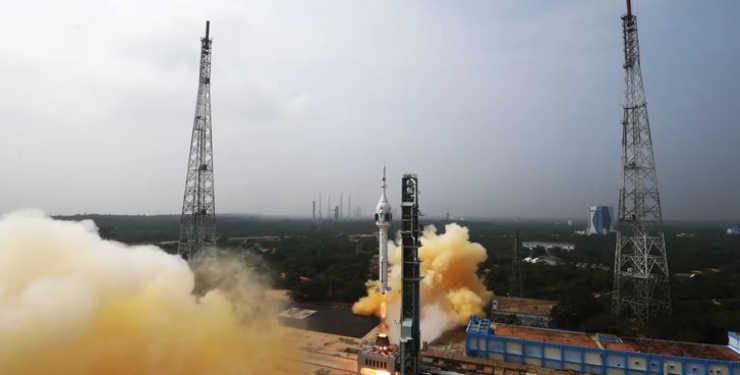
The first test of the Gaganyan spacecraft took place in India.
On Saturday, October 21, India conducted the first test of the Gaganyan spacecraft prototype, but without a crew. As part of the test flight, the scientists tested the launch and rescue system for the ship’s crew. This is the first step in the realization of the historic mission of this Asian country, which plans to send its first astronauts into orbit at the end of next year, to an altitude of 400 km, Space writes.
India is preparing for the first-ever launch of its astronauts on the Gaganyan spacecraft into space, which is scheduled to take place at the end of 2024. In preparation for this flight, a crew capsule was launched to test the astronauts’ emergency rescue system. The test showed that in the event of an emergency, the crew would be able to successfully abandon the spacecraft.
During the test, a leaky test version of the Gaganyan spacecraft crew module and the attached crew rescue system module were sent into the air.
The spacecraft flew into the atmosphere on a single-stage rocket specially designed for this purpose, although next year Gaganyan will go into space on a more powerful launch vehicle.
According to the test flight plan, both modules were to separate from the rocket at an altitude of 12 km, after which the crew rescue module would launch its own engines. After that, they had to open their parachutes and land in the Indian Ocean.
According to the Indian space agency, the mission was successful, which means that in case of unforeseen situations, the crew will be able to return to Earth safely.
Today, India is trying to secure its status as a space power, and it is already succeeding. For example, in September of this year, India successfully completed its Chandrayaan-3 lunar mission. Two spacecraft, a lander and a lunar rover, not only landed several hundred kilometers from the Moon’s south pole for the first time in history, but also conducted important research in this region.
Also in September, India sent the Aditya-L1 spacecraft to study the Sun. This is the first Indian solar probe. It will study our star from a distance of 1.5 million kilometers from the Earth, being in the gravitationally stable Lagrange point L1 of the Sun-Earth system.

